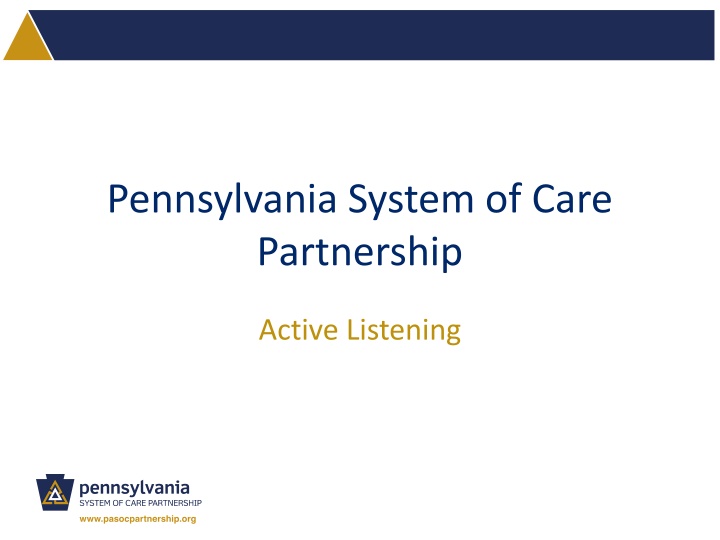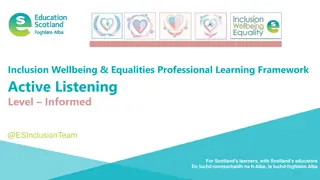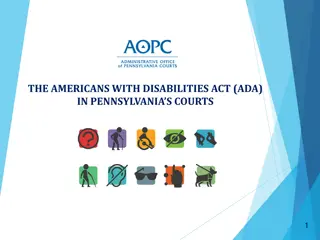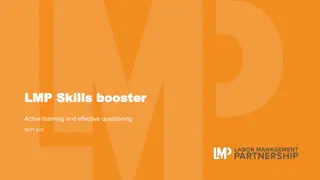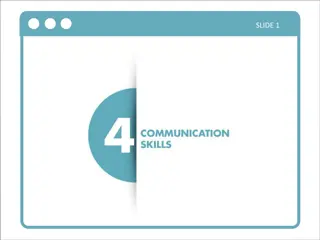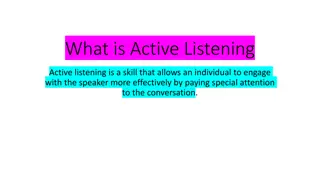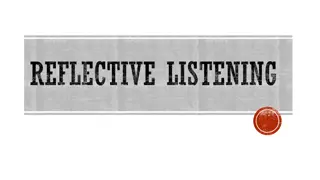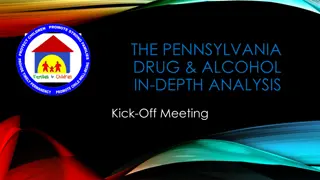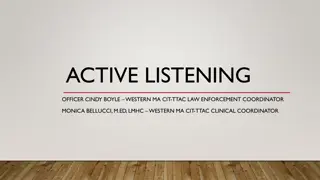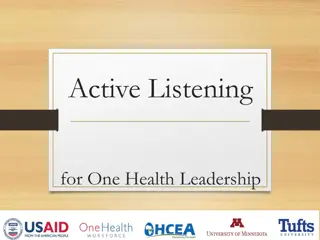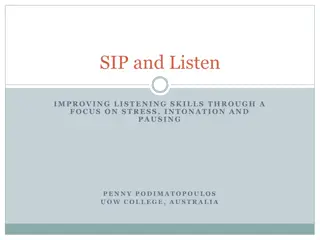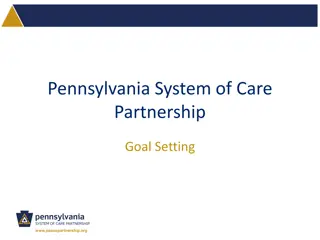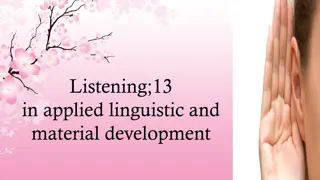Pennsylvania System of Care Partnership - Active Listening Techniques
Enhance your communication skills through active listening techniques taught by the Pennsylvania System of Care Partnership. Discover the art of verbal and non-verbal communication, including interpersonal skills and reflective practices. Explore different modes of communication such as face-to-face, written, and visual methods used in today's diverse communication landscape.
Download Presentation

Please find below an Image/Link to download the presentation.
The content on the website is provided AS IS for your information and personal use only. It may not be sold, licensed, or shared on other websites without obtaining consent from the author.If you encounter any issues during the download, it is possible that the publisher has removed the file from their server.
You are allowed to download the files provided on this website for personal or commercial use, subject to the condition that they are used lawfully. All files are the property of their respective owners.
The content on the website is provided AS IS for your information and personal use only. It may not be sold, licensed, or shared on other websites without obtaining consent from the author.
E N D
Presentation Transcript
Pennsylvania System of Care Partnership Active Listening
Pennsylvania System of Care Partnership Active Listening 2
Pennsylvania System of Care Partnership What is Communication Verbal Communication Non-Verbal Communication Interpersonal Communication Skills Active Listening Reflecting Clarifying and Clarification 3
Pennsylvania System of Care Partnership Active Listening The act of mindfully attempting to comprehend the meaning of words spoken by another in a conversation or speech. important business communication skill involves attentiveness listener feedback by paraphrasing what has been said by the other party for their confirmation. 4
Pennsylvania System of Care Partnership Communication The act of transferring information from one place/person to another. 5
Pennsylvania System of Care Partnership Verbal Face to face (SKYPE) Telephone Radio Television In person 6
Pennsylvania System of Care Partnership Non-Verbal Body Language Gestures How we dress How we act Scent 7
Pennsylvania Systems of Care Partnership Written Communication Letters E-mails Books, Magazines Internet Texts 8
Pennsylvania System of Care Partnership Graphs, Charts Maps Logos Billboards 9
Pennsylvania System of Care Partnership Interpersonal Communication How we exchange information, through feelings and meaning by verbal and non-verbal messages. Tone -how something is said. 10
Pennsylvania System of Care Partnership Interpersonal Skills Life skills we use everyday to communicate and interact with others , individually and in groups. 11
Pennsylvania System of Care Partnership Active Listening Time and patience Fully Concentrating on What Listening and Hearing 12
Pennsylvania Systems of Care Partnership Signs of Active Listening Facial expressions Body posture Mirroring Distraction 13
Pennsylvania System of Care Partnership Verbal Signs Positive Reinforcement Remembering Questioning 14
Pennsylvania System of Care Partnership Reflection Clarification Summarization 15
Pennsylvania System of Care Partnership Active Listening Is an acquired skill Takes time and practice to listen and understand another s messages Be accepting by remaining neutral and non-judgmental Takes patience 16
Pennsylvania System of Care Partnership Resources www.skillsyouneed.com National Federation of Families for Children s Mental Health 17
Contact Information Dianna Brocious Family Involvement Specialist pasocdianna@gmail.com 724-525-0329 Crystal Karenchak Family Involvement Specialist karenchakcm@upmc.edu 717-772-7628 412-260-8114 (cell) www.pasocpartnership.org This project, publication/report/ Was developed [in part] under grant number SM061250 from the Substance Abuse and Mental Health Services Administration (SAMHSA), U.S. Department of Health and Human Services (HHS). The views, policies, and opinions expressed are those of the authors and do not necessarily reflect those of SAMHSA or HHS. Revised 2016 18
